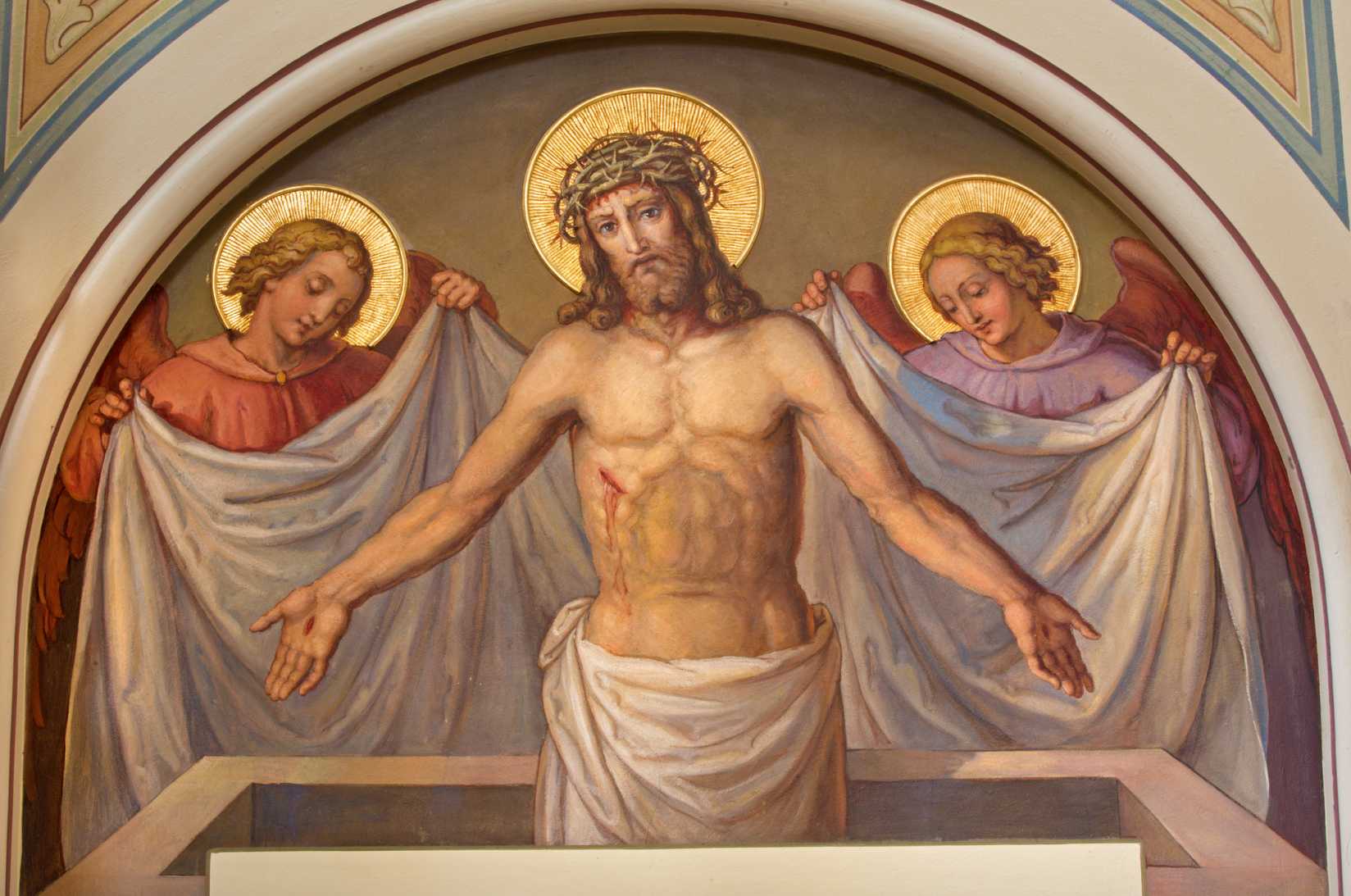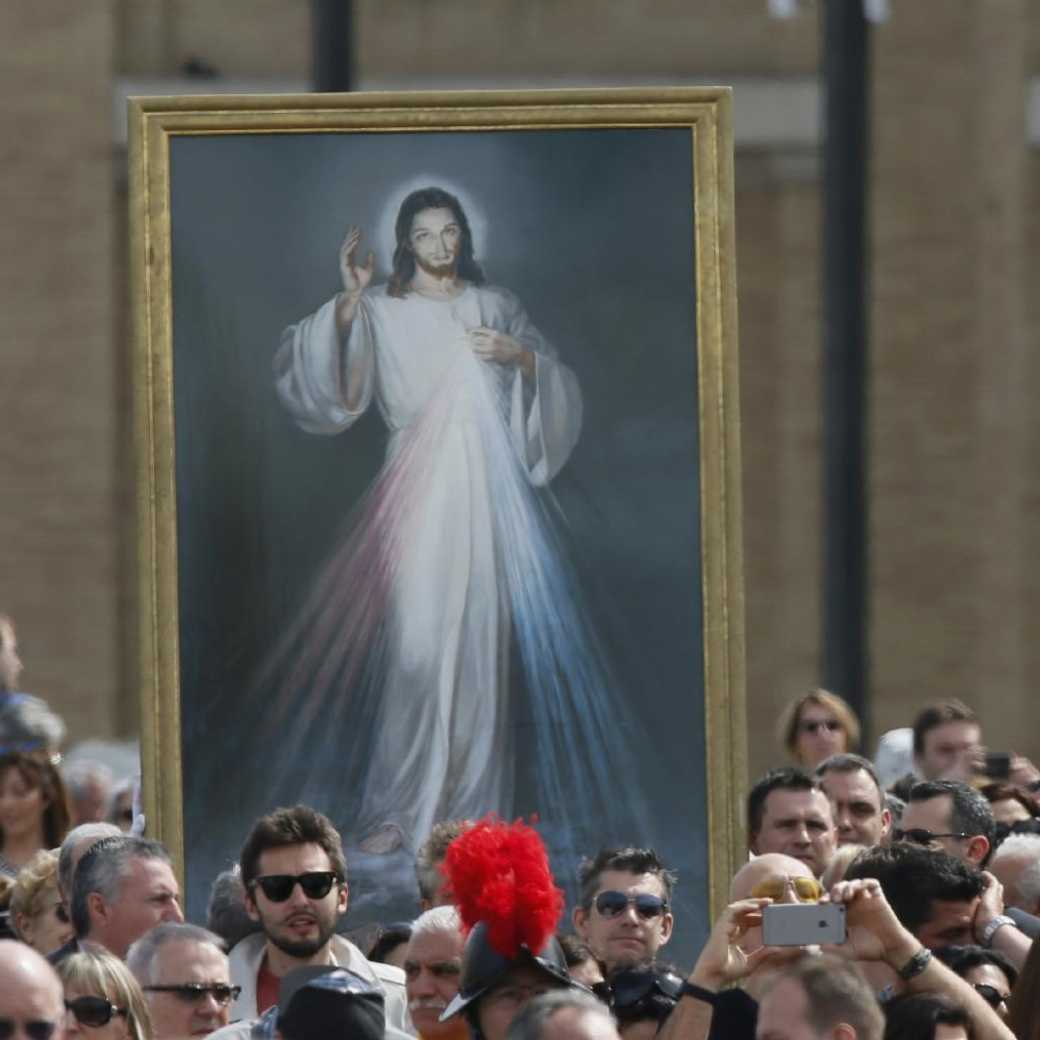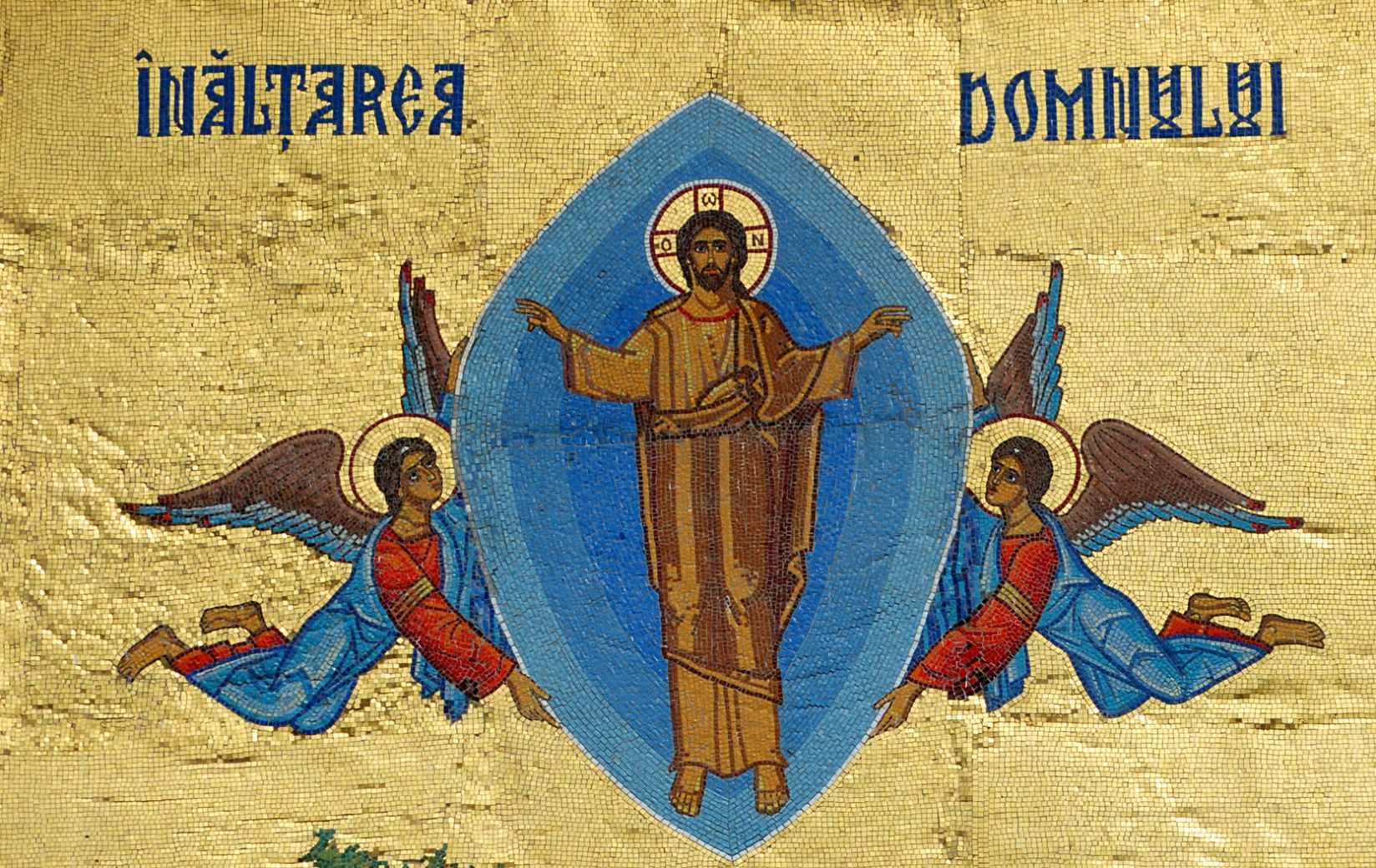What is Easter?
March 31, 2024 - May 19, 2024

The word "Easter" comes from Old English, meaning simply the "East." The sun which rises in the East, bringing light, warmth, and hope, is a symbol for the Christian of the rising Christ, who is the true Light of the world. The Paschal Candle used during the Easter Vigil is a central symbol of this divine light, which is Christ. It is kept near the ambo throughout Easter Time and lit for all liturgical celebrations.
The Easter Vigil is the "Mother of All Vigils" and Easter Sunday is the greatest of all Sundays. The season of Easter is the most important of all liturgical times, which Catholics celebrate as the Lord's resurrection from the dead, culminating in his Ascension to the Father and sending of the Holy Spirit upon the Church. The octave of Easter comprises the eight days which stretch from the first to the second Sunday. It is a way of prolonging the joy of the initial day. There are 50 days of Easter from the first Sunday to Pentecost. It is characterized, above all, by the joy of glorified life and the victory over death expressed most fully in the great resounding cry of the Christian: Alleluia! All faith flows from faith in the resurrection: "If Christ has not been raised, then empty is our preaching; empty, too, is your faith." (1 Cor 15:14)
"What you sow is not brought to life unless it dies. And what you sow is not the body that is to be, but a bare kernel of wheat, perhaps, or of some other kind;…So also is the resurrection of the dead. It is sown corruptible; it is raised incorruptible. It is sown dishonorable; it is raised glorious. It is sown weak; it is raised powerful. It is sown a natural body; it is raised a spiritual body. If there is a natural body, there is also a spiritual one. So, too, it is written, "The first man, Adam, became a living being," the last Adam a life-giving spirit. But the spiritual was not first; rather the natural and then the spiritual. The first man was from the earth, earthly; the second man, from heaven. As was the earthly one, so also are the earthly, and as is the heavenly one, so also are the heavenly. Just as we have borne the image of the earthly one, we shall also bear the image of the heavenly one." (1 Cor 15:36-37, 42-49)

The Exsultet: The Proclamation of Easter
"Be glad, let earth be glad, as glory floods her, ablaze with light from her eternal King, let all corners of the earth be glad, knowing an end to gloom and darkness.”
Learn moreDivine Mercy Sunday
Mankind’s need for the message of Divine Mercy took on dire urgency in the twentieth century, when civilization began to experience an “eclipse of the sense of God,” and therefore, to lose the understanding of the sanctity and inherent dignity of human life. In 1931, Jesus appeared to Sr. Faustina in Poland and expressed his desire for a feast celebrating his mercy. The Feast of Mercy was to be on the Sunday after Easter and was to include a public blessing and liturgical veneration of His image with the inscription “Jesus, I trust in You.”
This promise of mercy has been affirmed by the Church, which has made Divine Mercy Sunday an occasion for receiving a plenary indulgence, “the remission before God of the temporal punishment due to sin whose guilt has already been forgiven” (CCC, no. 1471). The plenary indulgence is granted to the faithful under the usual conditions (Confession, Eucharist, prayer for the intentions of the pope, and complete detachment from sin, even venial sin). The faithful may either take part in the prayers and devotions held in honor of Divine Mercy in any church or chapel or recite the Our Father and Creed in the presence of the Blessed Sacrament exposed or reserved in the tabernacle, adding a devout prayer to the merciful Lord Jesus.
There are many aspects of the Divine Mercy devotion, including the Chaplet, the Divine Mercy image, and the “hour of great mercy” (3:00 p.m.). The popularity of these devotions, focused on the Lord’s infinite mercy, has grown rapidly in recent decades. Regarding the Chaplet of Divine Mercy, St. Faustina wrote that Jesus said to her, “At the hour of their death, I defend as My own glory every soul that will say this chaplet; or when others say it for a dying person “ (Divine Mercy in My Soul, no. 811).

“Jesus said to Sr. Faustina one day: ‘Humanity will never find peace until it turns with trust to Divine Mercy’ (Diary, p. 132). Divine Mercy! This is the Easter gift that the Church receives from the risen Christ and offers to humanity at the dawn of the third millennium.”
— St. John Paul II, Divine Mercy Sunday Homily, April 22, 2001
The Ascension

The Paschal Mystery culminates in the Ascension of Jesus. After his appearance here on earth in his risen body, and “after giving instructions through the Holy Spirit to the apostles whom he had chosen” (Acts 1:2), Jesus “was lifted up and a cloud took him from their sight” (Acts 1:9):
Christ’s ascension marks the definitive entrance of Jesus’ humanity into God’s heavenly domain, whence he will come again (cf. Acts 1:11). . . . Jesus Christ, the head of the Church, precedes us into the Father’s glorious kingdom so that we, the members of his Body, may live in the hope of one day being with him forever. Jesus Christ, having entered the sanctuary of heaven once and for all, intercedes constantly for us as the mediator who assures us of the permanent outpouring of the Holy Spirit. (CCC, nos. 665-667)
Daily Reading
Take a Moment to Pray
with Today's Readings
Pentecost

Pentecost marks the occasion of God sending the Holy Spirit upon Jesus’ disciples after his Resurrection. The book of Acts describes how the disciples were gathered together in one place on the day of Pentecost. The Jewish feast of Pentecost (Shavuot or the Feast of Weeks) was a day that commemorated the giving of the law to Moses, a day soon to be marked as well by the giving of the Holy Spirit. The day of Pentecost was a turning point for the disciples:
Before Pentecost, the disciples were unsure of what they were to do next and spent most of their time in hiding. After Pentecost and [receiving] the gifts of the Holy Spirit, they understood their mission to spread the Good News of Jesus, and they had the courage to come out of hiding and speak openly about who Jesus was and what he had accomplished by his dying and rising.
On Pentecost, the Holy Spirit gave the disciples the strength to fulfill their commission to spread the Good News of Jesus. The Church marks this day through a special liturgical celebration:
The Solemnity of Pentecost, on the fiftieth day of Easter, concludes the Easter season. In recent years, the Church has restored the extended vigil for this solemnity. Similar to Easter, the vigil of Pentecost includes four readings from the Old Testament, each with a proper Psalm and prayer, along with the Epistle and Gospel. At the conclusion of the Mass during the Day, the Paschal Candle is extinguished and moved to its permanent location near the baptismal font.
The Solemnity of Pentecost, which crowns and fulfills the Easter season, is a good time to pray for a deeper indwelling of the Holy Spirit.
FAQs about Easter
Why is Easter Celebrated?
Easter is the most important liturgical time for Catholics. It celebrates Jesus's victory of sin and death and salvation for mankind. It is God's greatest act of love to redeem mankind.
How are the dates for Easter, Palm Sunday, and Ash Wednesday determined?
Easter is celebrated on the first Sunday after the Paschal full moon, which is the first full moon occurring either on or after the spring equinox (March 21). As a result, Easter will always fall between March 22 and April 25. To get the date for Palm Sunday, we go back one full week since it's the Sunday before Easter Sunday. To find the date for Ash Wednesday, we go back six weeks which leads to the First Sunday of Lent and four days before that is Ash Wendesday.
Are there specific Easter Prayers?
Yes, during each Mass during the Easter Octave (the eight days following Easter Sunday) the Alleluia is sung at the conclusion of each Mass. There are other specified Easter prayers for the Mass and liturgical celebrations that can be found in the Roman Missal.
Is Easter always celebrated on a Sunday?
Yes, Easter is always celebrated on a Sunday since Jesus rose from the dead on the first Sunday following the Jewish feast of Passover.
Liturgical Notes for Easter
Universal Norms
22. The fifty days from the Sunday of the Resurrection to Pentecost Sunday are celebrated in joy and exultation as one feast day, indeed as one "great Sunday." These are the days above all others in which the Alleluia is sung.
23. The Sundays of this time of year are considered to be Sundays of Easter and are called, after Easter Sunday itself, the Second, Third, Fourth, Fifth, Sixth, and Seventh Sundays of Easter. This sacred period of fifty days concludes with Pentecost Sunday.
24. The first eight days of Easter Time constitute the Octave of Easter and are celebrated as Solemnities of the Lord.
25. On the fortieth day after Easter the Ascension of the Lord is celebrated, except where, not being observed as a Holyday of Obligation, it has been assigned to the Seventh Sunday of Easter (cf. no. 7).
26. The weekdays from the Ascension up to and including the Saturday before Pentecost prepare for the coming of the Holy Spirit, the Paraclete.
Liturgical Colors
The liturgical color for Easter is white. The General Instruction of the Roman Missal (no. 346) also states: "On more solemn days, festive, that is, more precious, sacred vestments may be used even if not of the color of the day. The colors gold or silver may be worn on more solemn occasions in the Dioceses of the United States of America."
Especially during Easter Time, instead of the customary Penitential Act, the blessing and sprinkling of water may take place as a reminder of Baptism.
Ascension Thursday
There are five metropolitan sees and their suffragan Dioceses which maintain the Solemnity of the Ascension on Thursday: Boston, Hartford, New York, Omaha, and Philadelphia. Every other region of the United States has opted to transfer the Solemnity to the following Sunday (the Seventh Sunday of Easter).
